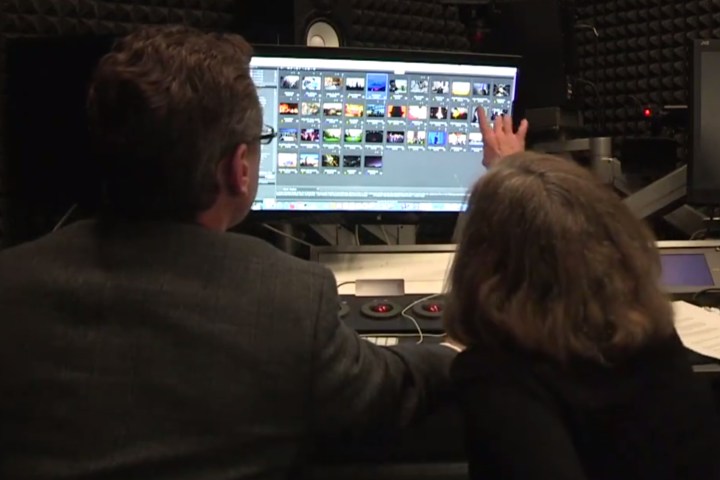
Calling it a particular strong week for photos, Lens co-editor James Estrin sat down with Michele McNally, assistant managing editor for photography; and David Scull, homepage photo editor; to go through roughly 180 photos that had been culled from 30,000 that have come in during the week. The three editors reviewed a variety of photos, including Pygmies in the Congo, presidential hopefuls on the campaign trail, May Day celebration, immigrants at the U.S.-Mexico border, the Met Gala, and Barnum and Bailey’s last elephant.
Eventually, the team chooses between 15 and 25 images that will end up in Week in Pictures, with a final update on Friday morning for any last-minute entries. The images come from freelance and staff photographers from every section of The New York Times, as well as images licensed from other agencies.
“There are a lot of great wire photographers — no question — but we like to have exclusive work too,” McNally said.
The process begins with the three quickly scanning through the photos on the first round, and slows down to review the shortlisted images in the next round. They try to keep the photos anonymous on the first round, in order to focus on the imagery and not who shot it. During the process, McNally, Scull, and Estrin talk about what they like or dislike — oftentimes questioning one another, as a form of collaboration.
“Sometimes we have to talk each other out of things because we fall in love with something about it,” Scull said. For example, in one photo where Scull thought looked fun, McNally counters by saying she didn’t like the separation of it and couldn’t see the layers — that it didn’t pop out enough.
When Estrin asked, “What makes a photograph for you?” McNally said she looks for historical context, emotion, psychological and sociological objectives, and aesthetics. “Details are very important,” she said.
“Beautiful composition, moment, light, content, and news value,” Scull added. “We’re always looking for pictures we have never seen before.”
The editors said they do not crop images — they leaves that to the photographer — but occasionally may tone an image. They also don’t do any color correction for the blog post, although The New York Times will do them when photos go to print.
Week in Pictures started off as a daily exercise, but it was challenging, the editors said. By doing it weekly, they said the bar on quality has been raised. What’s interesting is that despite going through all these photos, the editors easily knew the stories behind them and the photographers who took them, even without knowing the captions.


